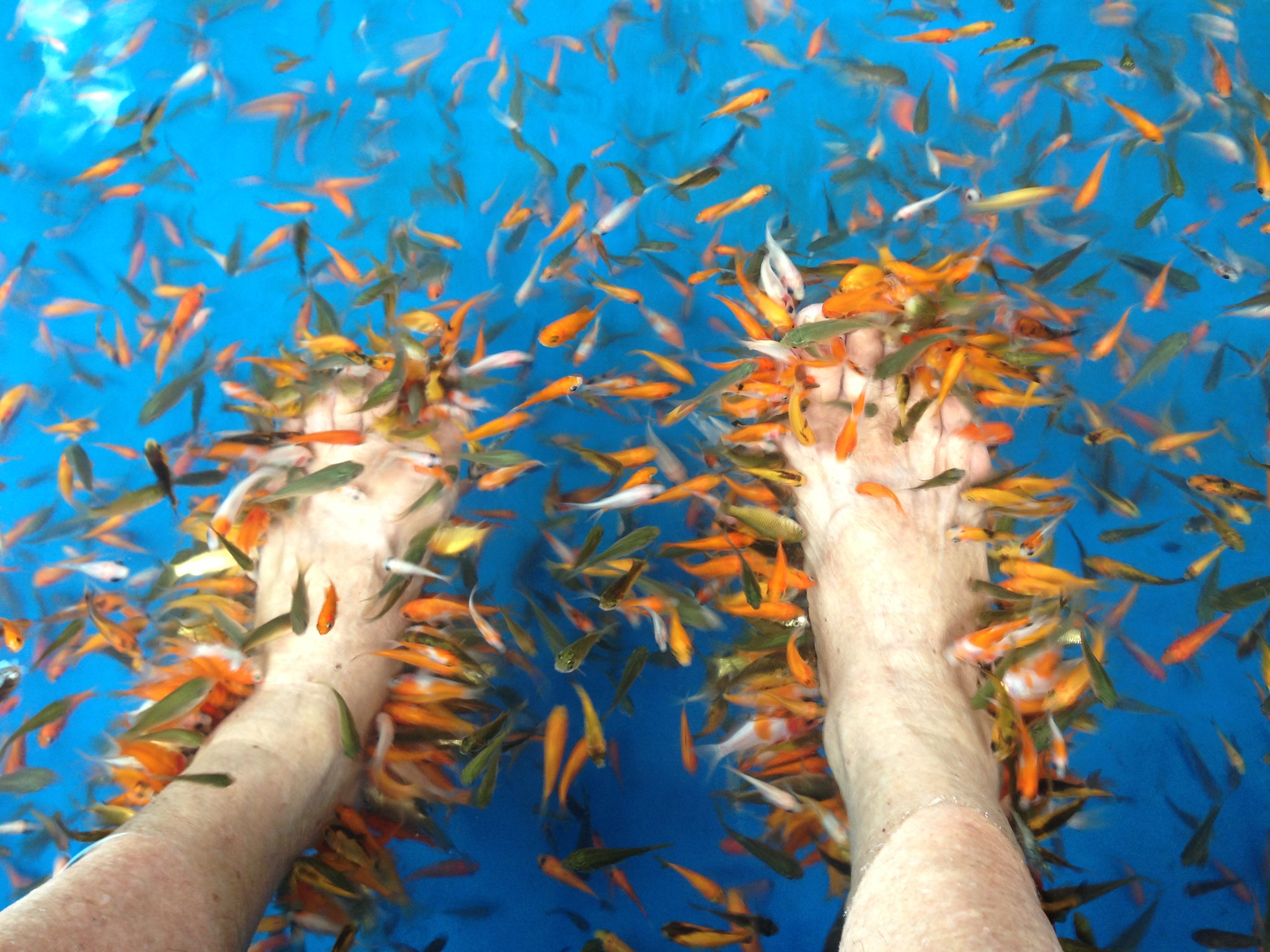 A fish pedicure, also known as a fish spa, involves patrons dipping their feet in a tub of water filled with small fish called Garra rufa. Garra rufa are sometimes referred to as "doctor fish" because they eat away dead skin found on peoples’ feet, leaving newer skin exposed.
A fish pedicure, also known as a fish spa, involves patrons dipping their feet in a tub of water filled with small fish called Garra rufa. Garra rufa are sometimes referred to as "doctor fish" because they eat away dead skin found on peoples’ feet, leaving newer skin exposed.
The tiny toothless carp that nibble away dead, callused skin from the feet of salon customers undergoing fish pedicures may carry bacteria responsible for a variety of dangerous skin and soft tissue infections, British scientists reported today.
Each state has the authority to ban fish pedicures. Currently, over 10 states have banned the use of fish pedicures.
- The fish pedicure tubs cannot be sufficiently cleaned between customers when the fish are present.
- The fish themselves cannot be disinfected or sanitized between customers. Due to the cost of the fish, salon owners are likely to use the same fish multiple times with different customers, which increases the risk of spreading infection.
- Chinese Chinchin, another species of fish that is often mislabeled as Garra rufa and used in fish pedicures, grows teeth and can draw blood, increasing the risk of infection.
- According to the U.S. Fish and Wildlife Service, Garra rufa could pose a threat to native plant and animal life if released into the wild because the fish is not native to the United States.
- Fish pedicures do not meet the legal definition of a pedicure.
- Regulations specifying that fish at a salon must be contained in an aquarium.
- The fish must be starved to eat skin, which might be considered animal cruelty.